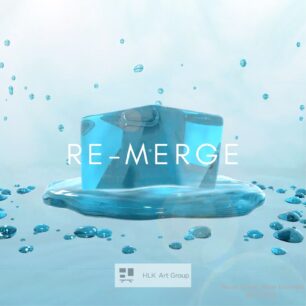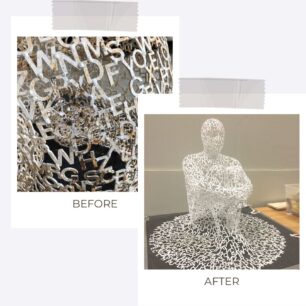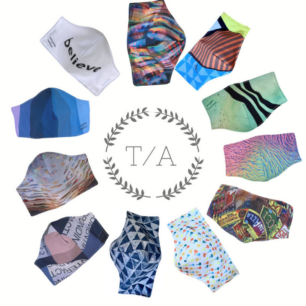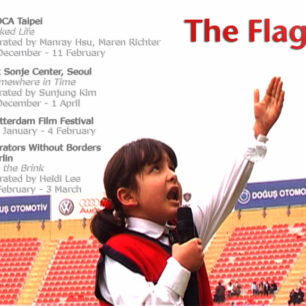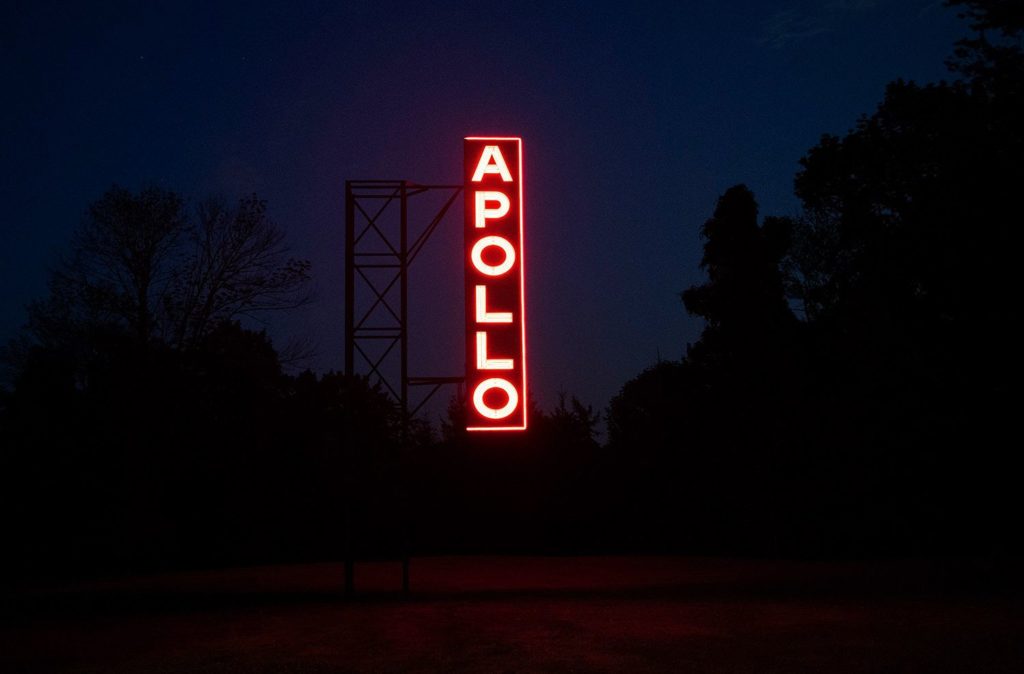
Photo by Claire Ritz, Courtesy of Artist and Lehmann Maupin
In solidarity with the Black Lives Matter movement, this multi-day virtual curatorial project addresses the senseless killings of Ahmaud Arbery, Breonna Taylor, George Floyd, and Rayshard Brooks, and the continual reverberations of systemic racism in the United States suffered by Black, Indigenous, and People of Color communities. Aligning with art-activists Rirkrit Tiravanija & Tomas Vu’s sentiment portrayed in The Revolution Will Come in Every Direction (2019), HLK intern Anna Greenspan prepared this public online curation in collaboration with HLK to be viewed on our Instagram Stories and Highlights. Read below to learn more about our curation with the aim to amplify Black narratives throughout the contemporary art landscape.
Note: Honoring Black Artists is a collection of works by Black artists hailing from various backgrounds, geographies, genders, sexual orientations, and faiths. Since this project is by no means an extensive survey of Black artists today, an Open Reply form will be included at the IG Story’s end for anyone to submit comments and suggestions. A compilation will be added to this post’s end–a distinct advantage of exhibiting within a flexible and transformative digital realm such as social media.
In an interview for Art21’s documentary “Kerry James Marshall: Being an Artist,” the painter reflects on a Langston Hughes essay, “The Negro Artist and the Racial Mountain.” Hughes observes that a Black artist’s position in their field is scaffolded by a racial bias; Marshall instead condones focusing on an artist’s contribution to artistry in the field. Indeed, we can see the (mere) beginnings of Marshall’s statement in art institutions’ recent efforts to diversify. The new MoMA featured Faith Ringgold’s 1967 cubist mural American Series #20: Die, and its rather troublesome (albeit notable) neighbor, 50 years Die’s senior: Pablo Picasso’s Les Demoiselles d’Avignon. As exemplified by this creative activism, we all have a duty to participate, something ever-effective at a time when Black people and their allies are uniting under a common cause. And, as Hughes advocated for over 90 years prior, and as Marshall emphasizes today, we can finally begin look forward to a future in which racially-charged systemic imbalances dissipate, and there is subsequent equality and impartiality in the artistic and cultural realms and beyond.
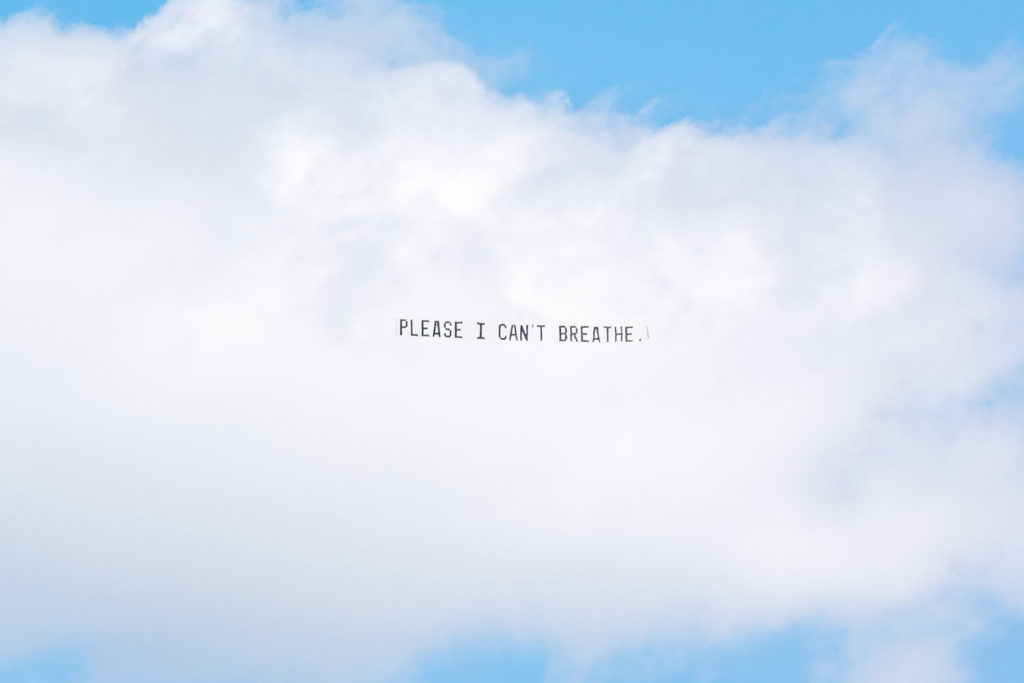
Photo Courtesy of Artist and Library Street Collective
The online exhibition commences with Louisiana artist, Jammie Holmes’ five part series depicting George Floyd’s last words defiantly suspended above major U.S. cities. Please I Can’t Breathe (Detroit) (2020), is a near parallel to the final statement by Eric Garner, another victim of race-based police brutality. Tugged through a soft veil of dissipating clouds across a fluorescent-blue sky, Floyd’s words are clearly visible despite the immense distance from viewers on the ground. The piece toggles between the ethereal and the eternal (heaven) literally using the sky as a canvas.
Holmes’ series may be seeped in metaphor. An enlightening conversation with HLK revealed its timely correspondence with Covid-19, a contagious virus that fatally attacks the respiratory system, and a dying planet exhausted of resources. Both imminent issues are affected by fragile preventative mechanisms which are ever-magnified in and disproportionately endured by Black and IPOC communities. As such, artists such as Holmes help to support and re-scaffold the spaces in which marginalized communities can fully breathe.
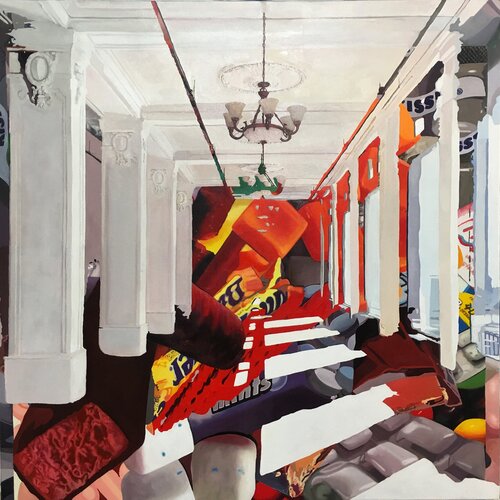
Photo Courtesy of Artist
Darryl Westly’s Interior with Ceiling (2016) may very well respond to this necessity. Like much of the artist’s work, this painting challenges classical structures and subject matters by incorporating contemporary phenomena and literally restructuring spaces.
This idea is further brought to light via Nari Ward’s Apollo / Poll (2017). The neon sculpture of the word “APOLLO” features an intermittently blinking A and second O in the historic theater’s name–perhaps a statement on the importance of political participation to protect and foster Black spaces despite the widespread disenfranchisement resulting from a broken system.
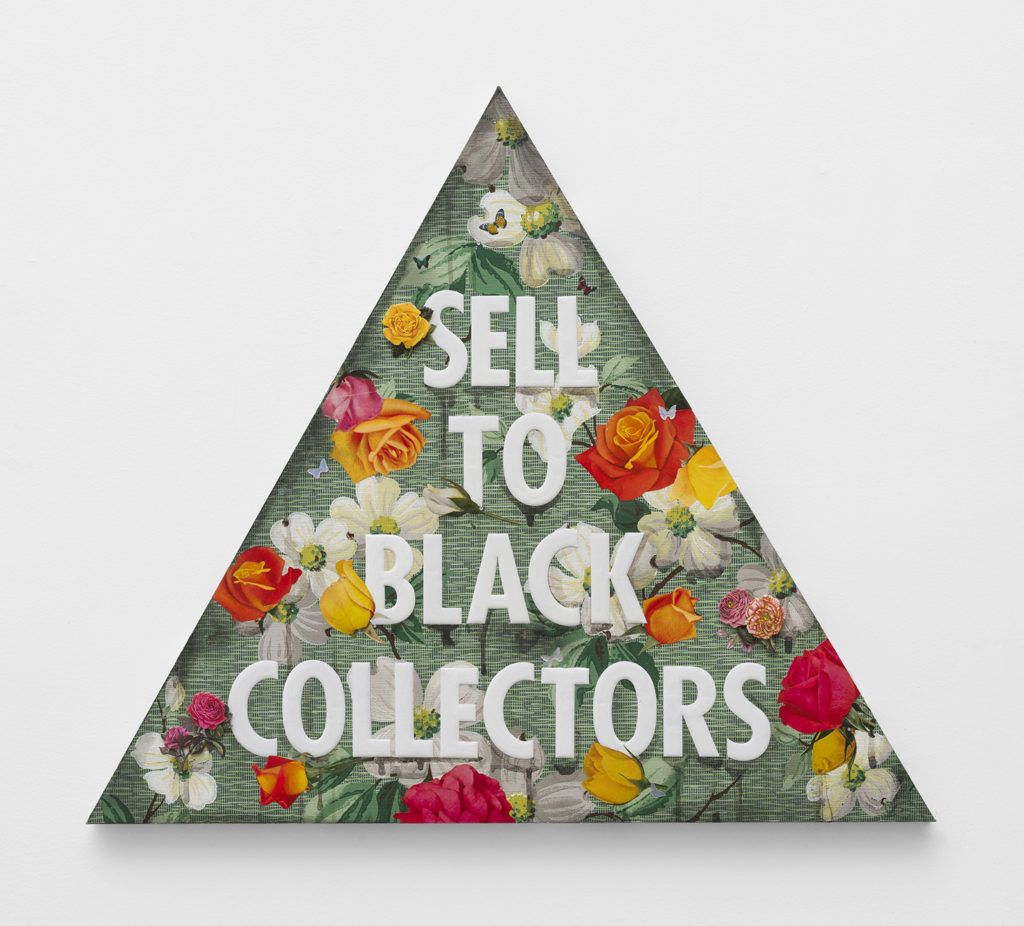
Genevieve Gaignard, Sell To Black Collectors (Green), 2020 Photo Courtesy of Artist
Opening spaces is ever-important at a moment when, as of 2019, Black artists are the most underrepresented ethnicity in major American museum collections (Topaz). The essentiality of valuing contributions by people from marginalized communities is a message further conveyed in the romantic yet poignant pieces such as Sell To Black Collectors (Green) (2020) by multi-media collagist Genevieve Gaignard.
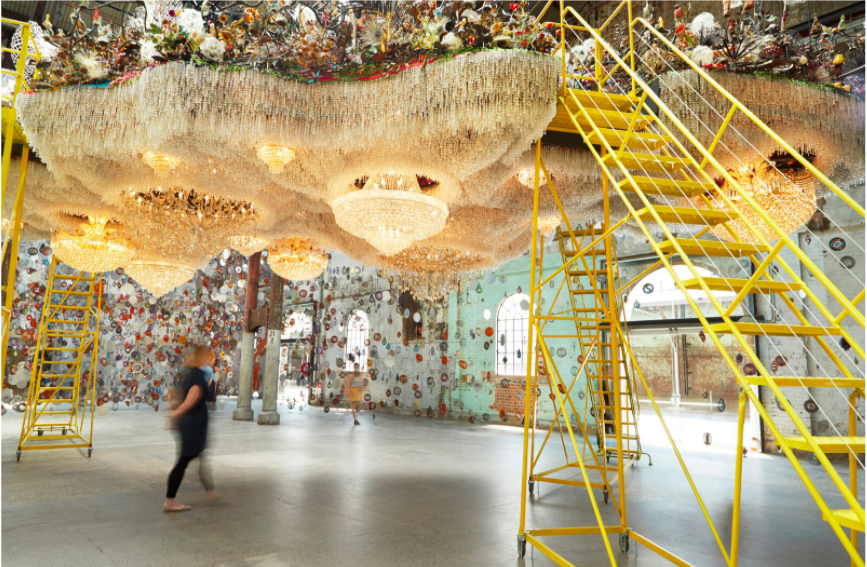
Persistent racial injustice in America has possibly reached a turning point since the ignition of both physical and digital activism over this past month. In concluding this project, one in particular that stands out and points towards hopeful sentiment is Nick Cave’s brilliant installation, Until (2016). The piece commences with an immersive field of glittering foil appendages, representing the grim reality of racially-biased gun violence and police brutality. Walking through the forged path reveals an incredible destination. Suspended one story above the ominous meadow is a platform: a tapestry of opaque crystals and chandeliers, obscuring a bountiful Eden of ceramic animals above, and figuratively accessible by several scaffolded neon ladders. Until’s ending evokes some heaven-like place, some future state of calm antedating the multitudinous, present calamities.
We welcome you to continue exploring this curation featuring works by Bill Traylor, William H. Johnson, Clementine Hunter, Gordon Parks, Azikiwe Mohammed, Adam Pendleton, Loïs Mailou Jones, Lonnie Holley, Marcus Leslie Singleton, and Noah Davis.
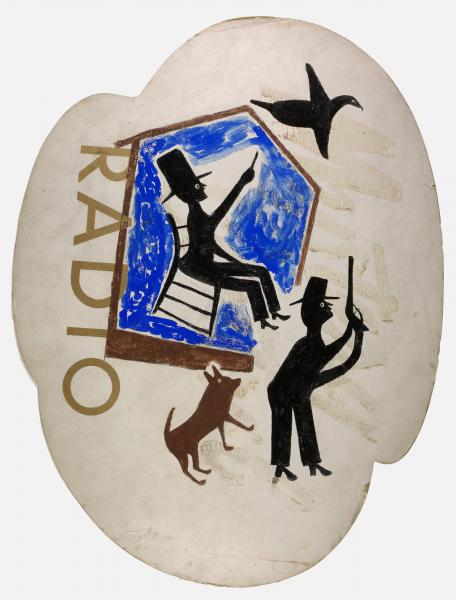
Photo: Smithsonian American Art Museum
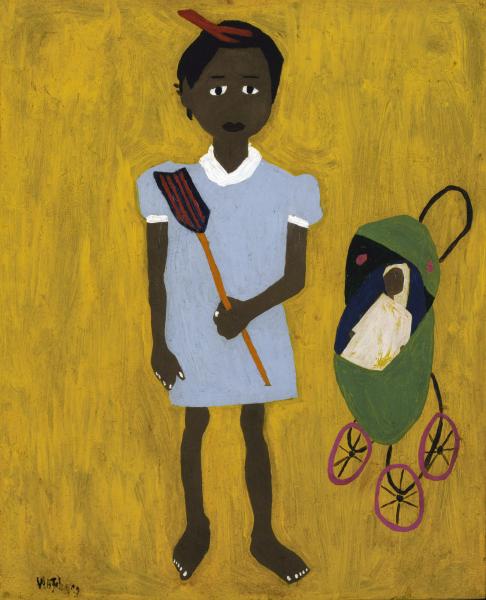
Photo: Smithsonian American Art Museum
Gift of the Harmon Foundation
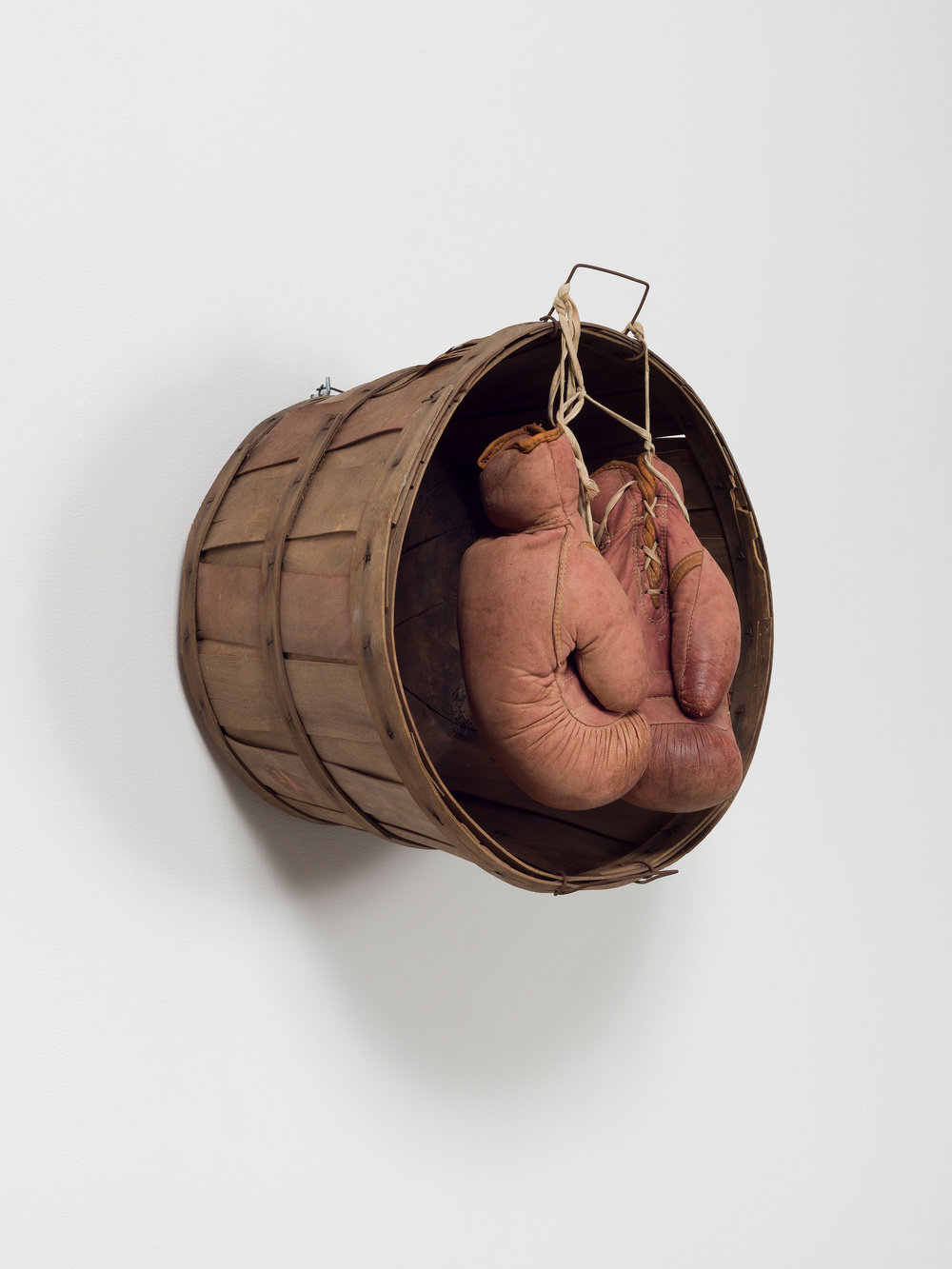
Photo by Pierre Le Hors, Courtesy of Artist
and Marlborough Gallery
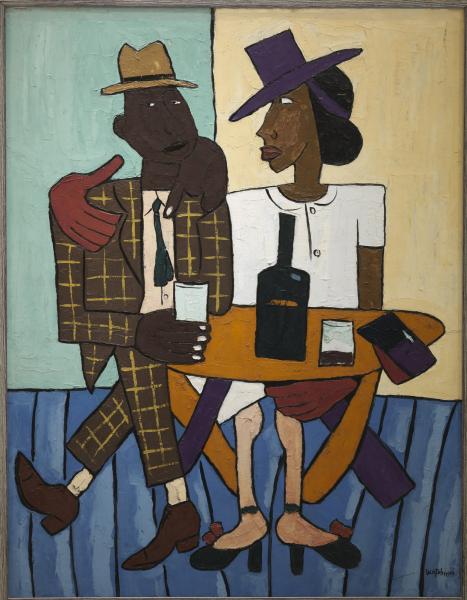
Photo: Smithsonian American Art Museum
Gift of the Harmon Foundation
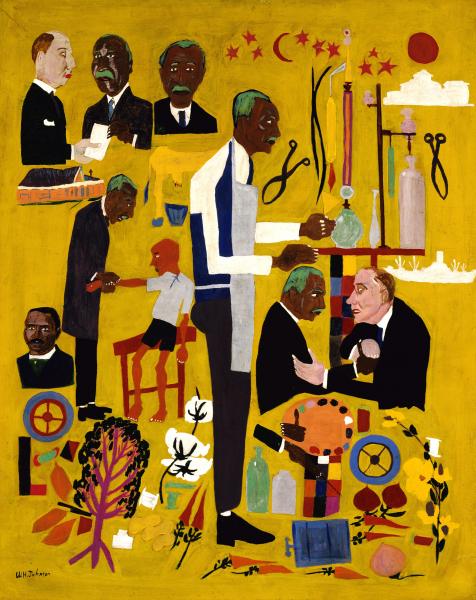
Photo: Smithsonian American Art Museum
Gift of the Harmon Foundation
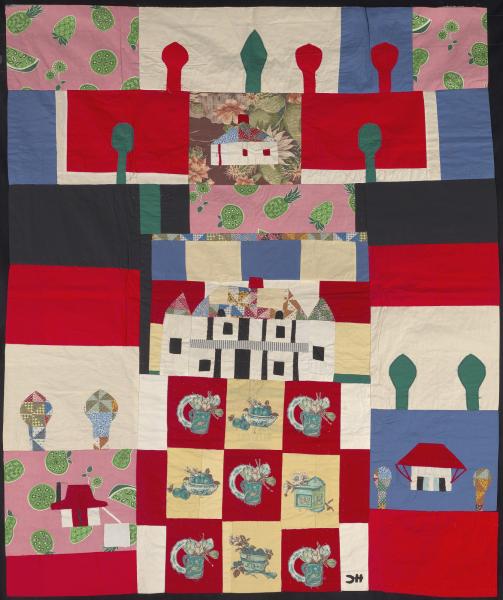
Photo: Smithsonian American Art Museum
Museum purchase through the Barbara Coffey Quilt Endowment
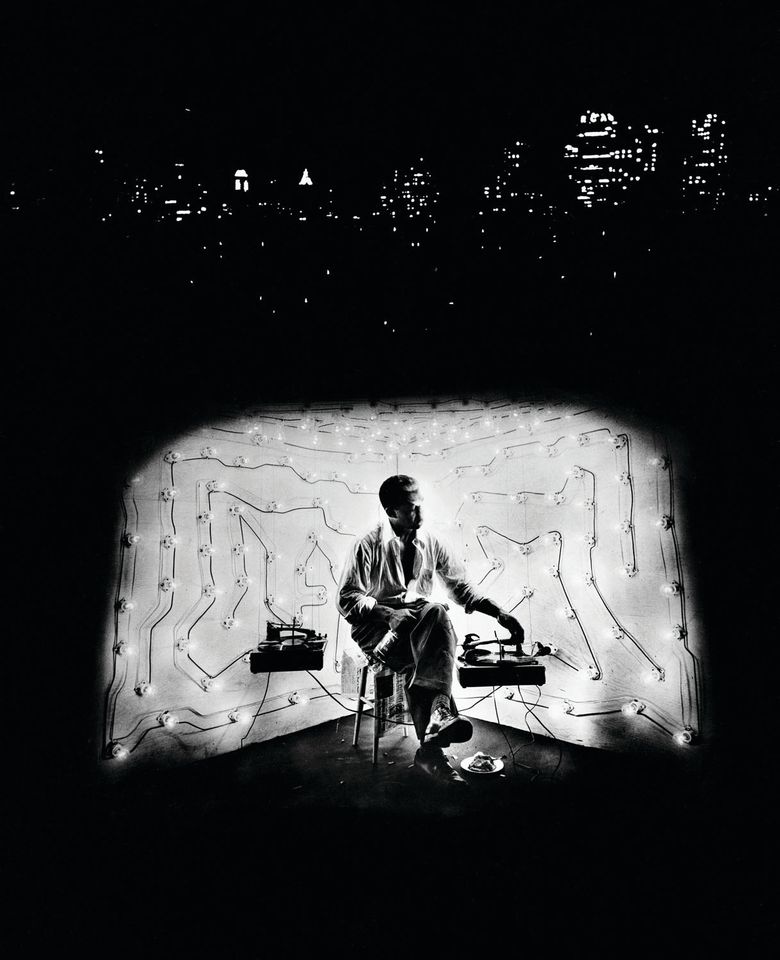
Photo: Gordon Parks Foundation
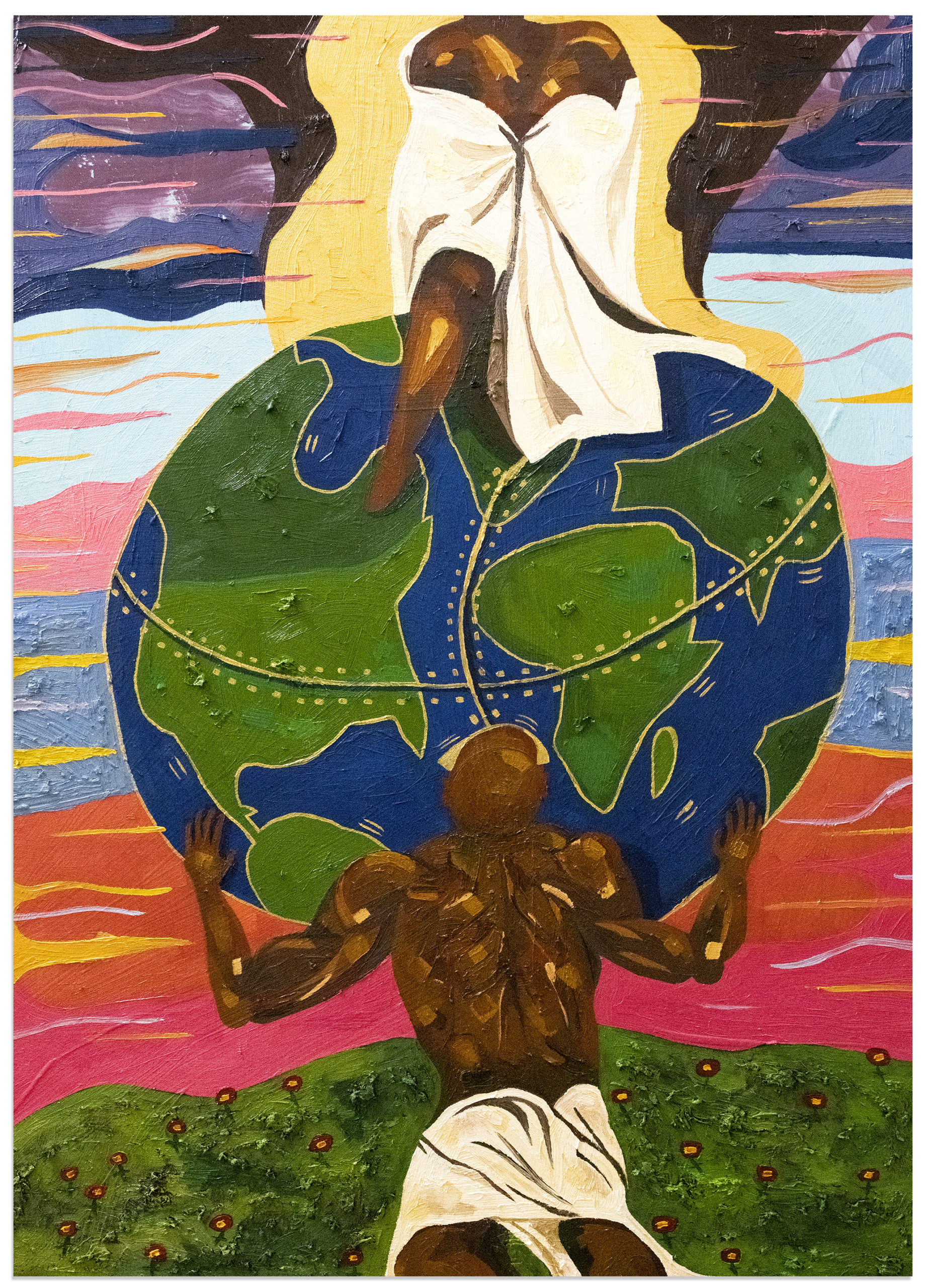
Photo Courtesy of Artist and Anna Zorina Gallery
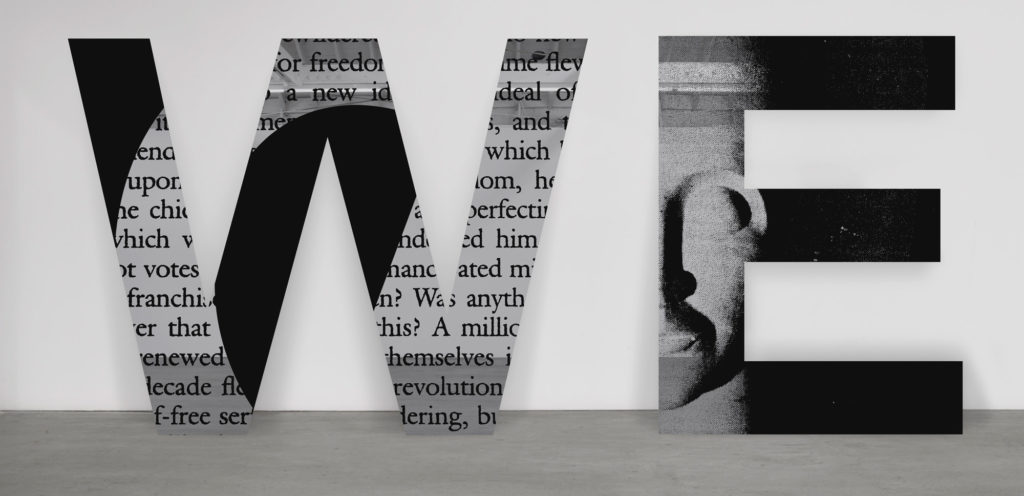
Photo Courtesy of Artist and Pace Gallery, New York and London
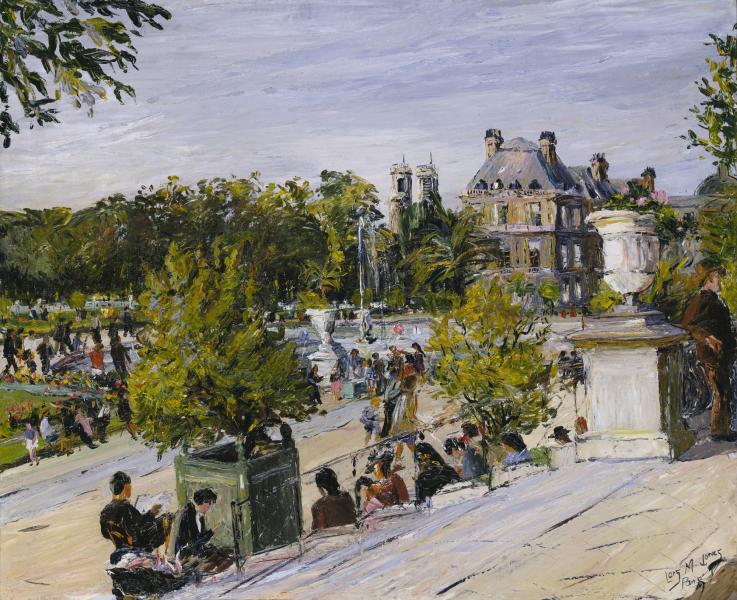
Photo: Smithsonian American Art Museum
Gift of Gladys P. Payne in honor of Alice P. Moore
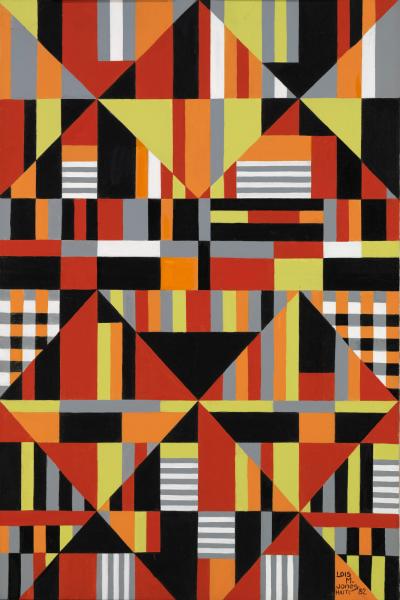
Photo: Smithsonian American Art Museum
Bequest of the artist
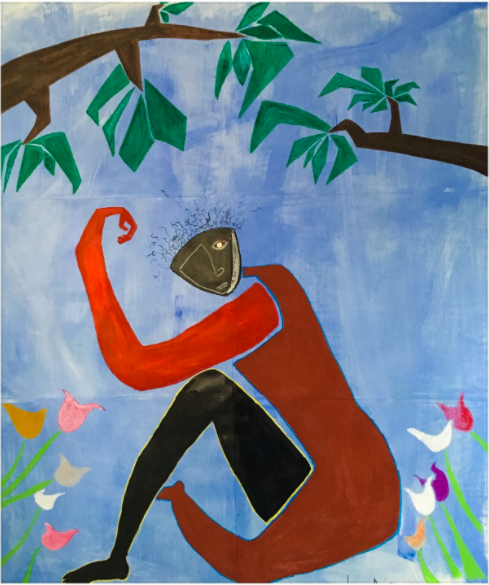
Photo Courtesy of Artist
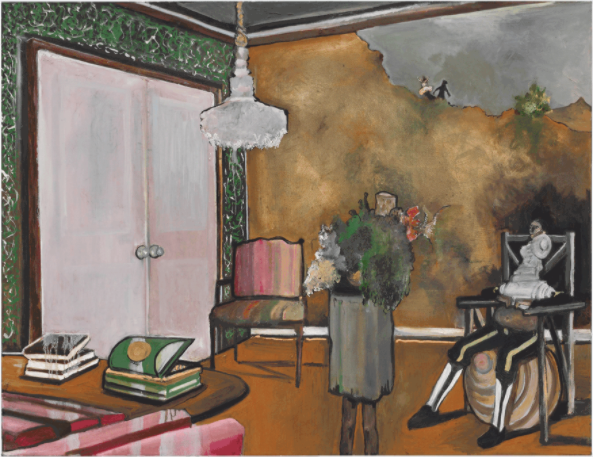
Photo Courtesy of Artist’s Estate and David Zwirner Gallery
POST SCRIPT
While art plays a critical role in educating audiences on these imminent issues, actions speak louder than words. Please consider contributing to these organizations which support Black artists, as well as these BLM partners which support African American communities across the country.


